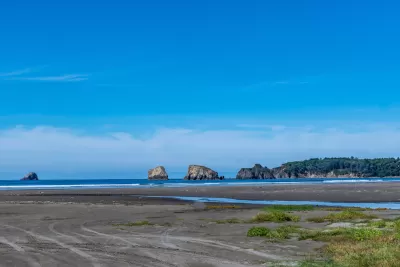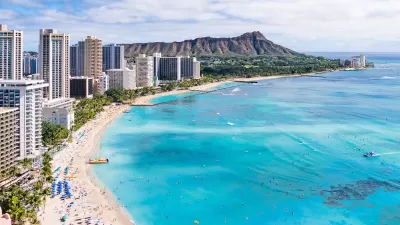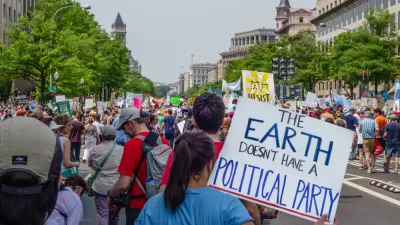Tribal communities threatened by climate change are opting to relocate or engage in ‘managed retreat’ to save their villages from sea level rise, erosion, flooding, and other climate impacts.

Eleven tribal communities have received federal relocation grants to help them move to safety to avoid the impacts of climate change, reports Kristi Eaton in the Daily Yonder.
The grants, which are worth $5 million each, are earmarked for communities facing significant and widely varied climate risks, including coastal and riverine erosion, permafrost degradation, wildfire, flooding, food insecurity, sea level rise, hurricane impacts, potential levee failure, and drought.
The grants are funded through the Bipartisan Infrastructure Law, “which provides a total of $466 million to the Bureau of Indian Affairs (BIA) over five years, including $216 million for climate resilience programs,” Eaton explains. “The Inflation Reduction Act provides BIA with an additional $220 million for climate adaptation and resilience, of which the Department anticipates spending $40 million to support voluntary community-driven relocation efforts, with the remainder supporting broader Tribal climate resilience activities.”
The Alaskan village of Newtok, one of the grant recipients, “decided to relocate in 1994 after a decade of trying to address the community’s erosion threat by other means of mitigation.” Another Alaskan village, Napakiak, “is conducting a managed retreat, which is different from a relocation,” in that threatened homes are moved to nearby locations adjacent to the current community. The grants aim to help communities figure out their best action plan for mitigating climate impacts and relocating when necessary.
FULL STORY: Tribal Nations Receive Relocation Grants to Escape the Effects of Climate Change

Study: Maui’s Plan to Convert Vacation Rentals to Long-Term Housing Could Cause Nearly $1 Billion Economic Loss
The plan would reduce visitor accommodation by 25,% resulting in 1,900 jobs lost.

North Texas Transit Leaders Tout Benefits of TOD for Growing Region
At a summit focused on transit-oriented development, policymakers discussed how North Texas’ expanded light rail system can serve as a tool for economic growth.

Why Should We Subsidize Public Transportation?
Many public transit agencies face financial stress due to rising costs, declining fare revenue, and declining subsidies. Transit advocates must provide a strong business case for increasing public transit funding.

Dear Tesla Driver: “It’s not You, It’s Him.”
Amidst a booming bumper sticker industry, one writer offers solace to those asking, “Does this car make me look fascist?”

A Visual Celebration of Manhattan’s Chinatown Elder Community, Through Food
Lanterns, cafeteria trays, and community connection take center stage in this stunning photo essay.

How to Make US Trains Faster
Changes to boarding platforms and a switch to electric trains could improve U.S. passenger rail service without the added cost of high-speed rail.
Urban Design for Planners 1: Software Tools
This six-course series explores essential urban design concepts using open source software and equips planners with the tools they need to participate fully in the urban design process.
Planning for Universal Design
Learn the tools for implementing Universal Design in planning regulations.
City of Santa Clarita
Ascent Environmental
Institute for Housing and Urban Development Studies (IHS)
City of Grandview
Harvard GSD Executive Education
Toledo-Lucas County Plan Commissions
Salt Lake City
NYU Wagner Graduate School of Public Service





























